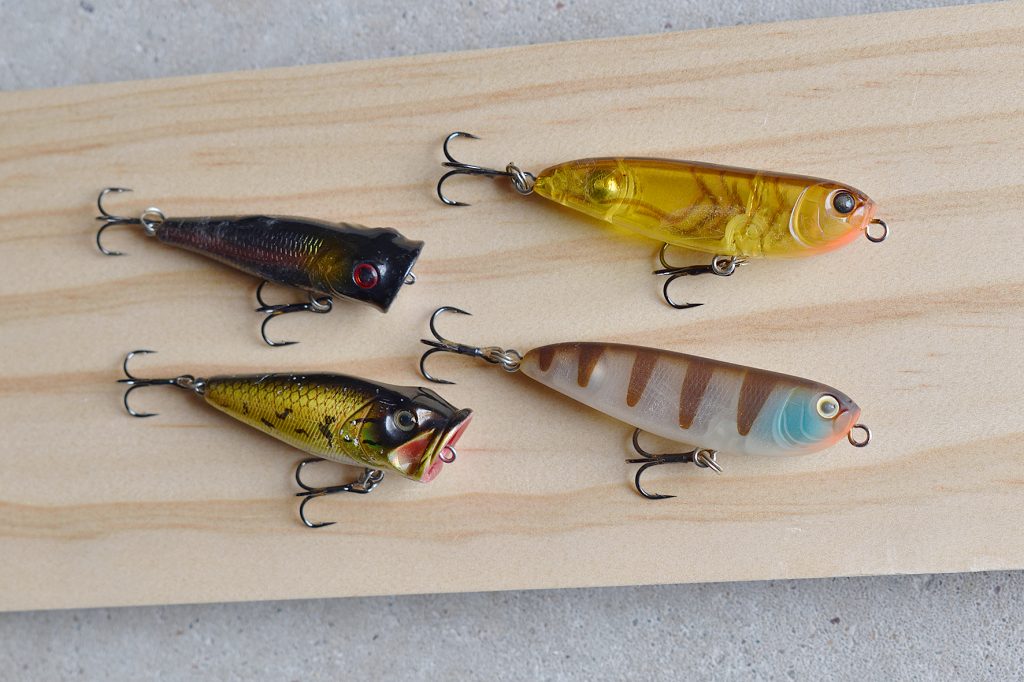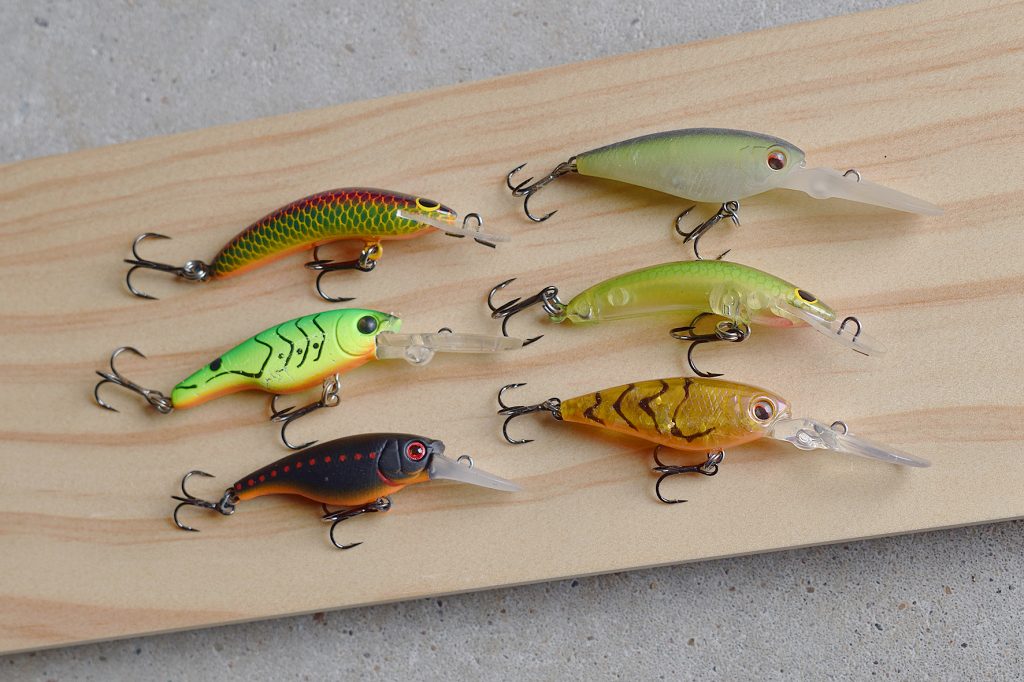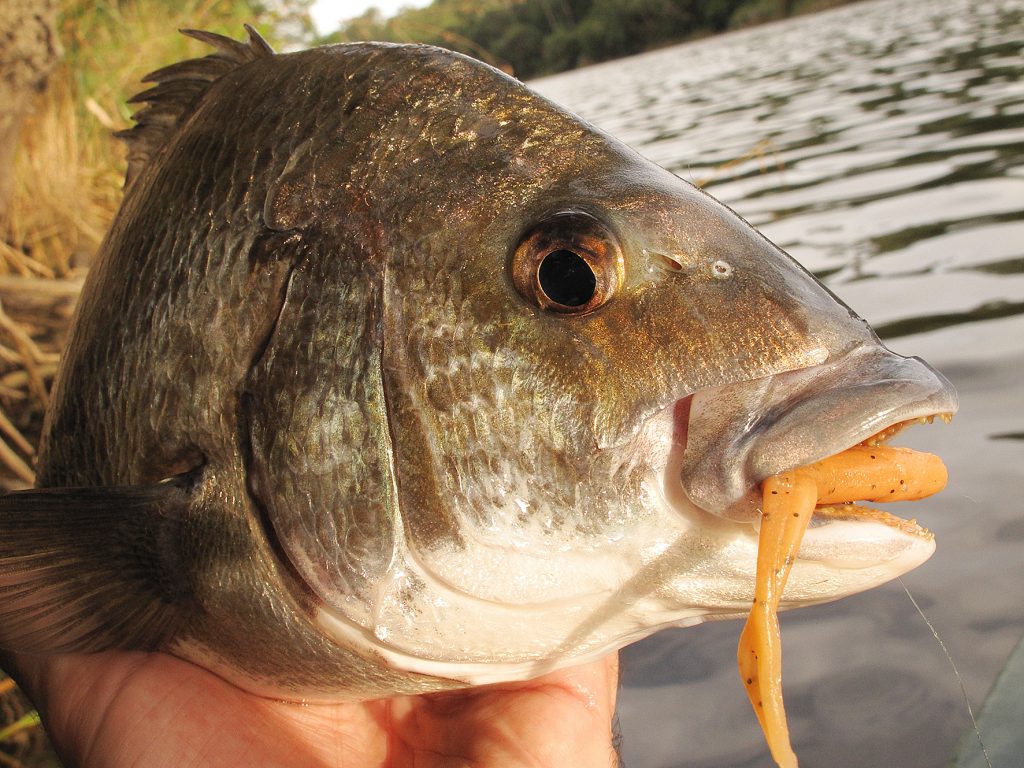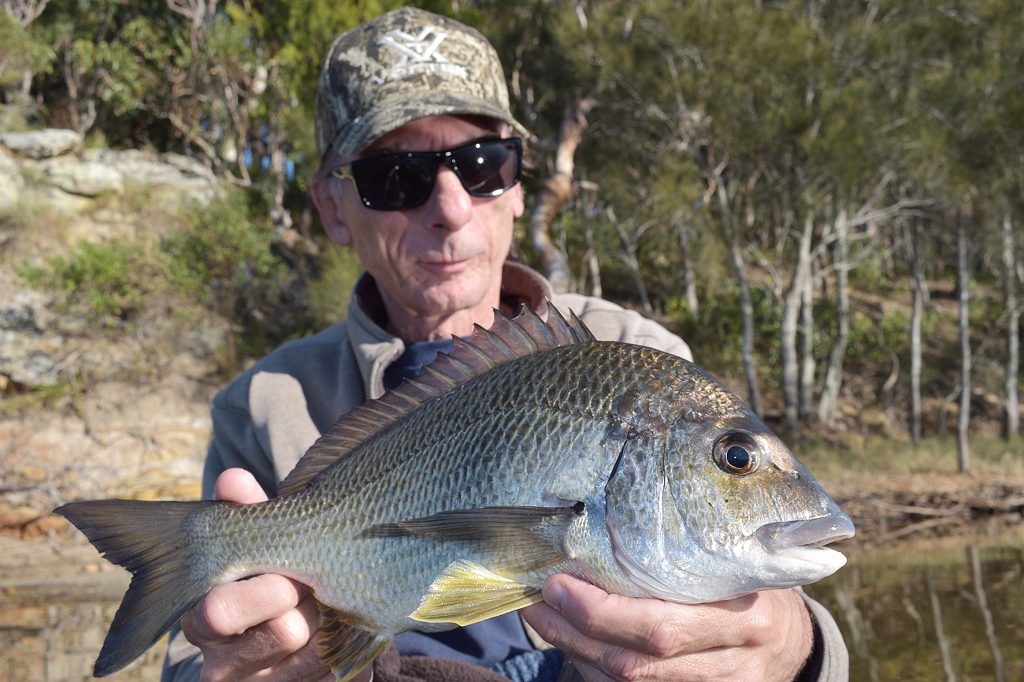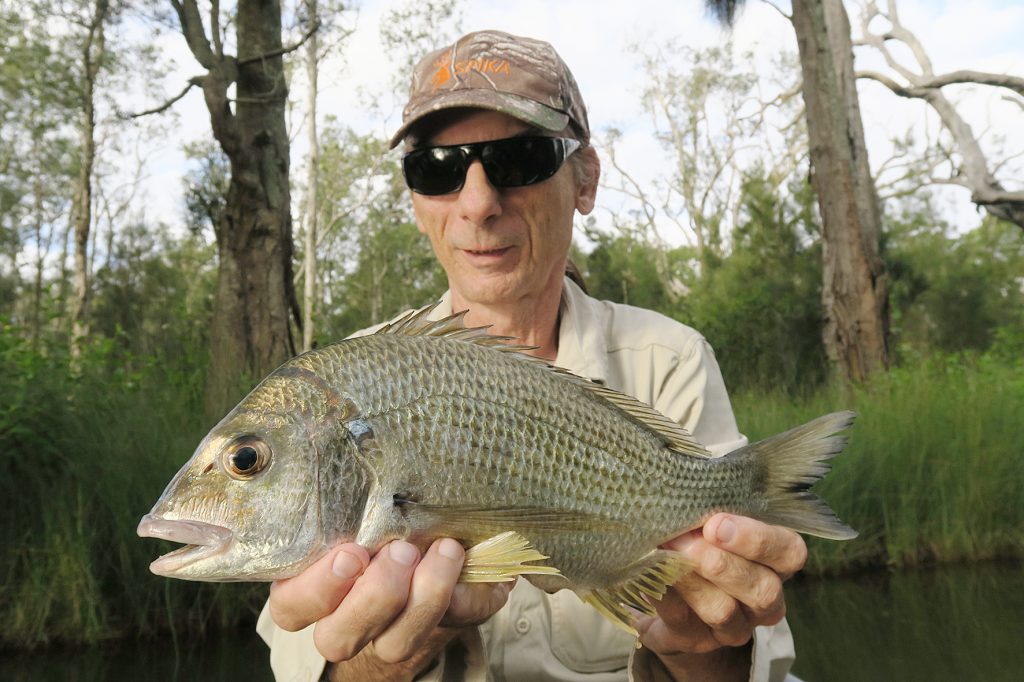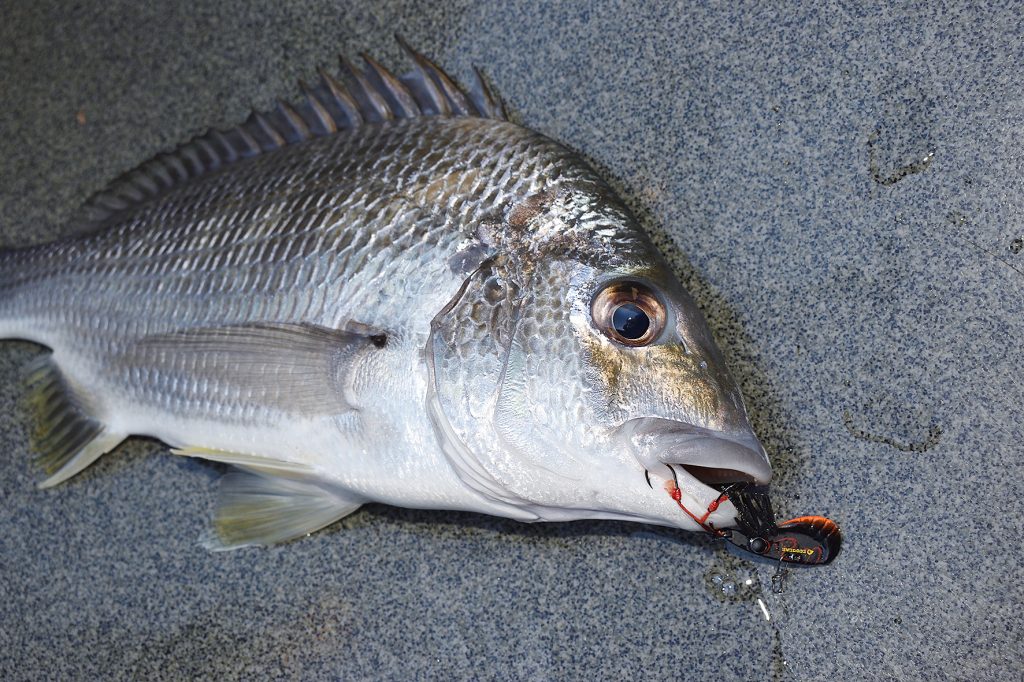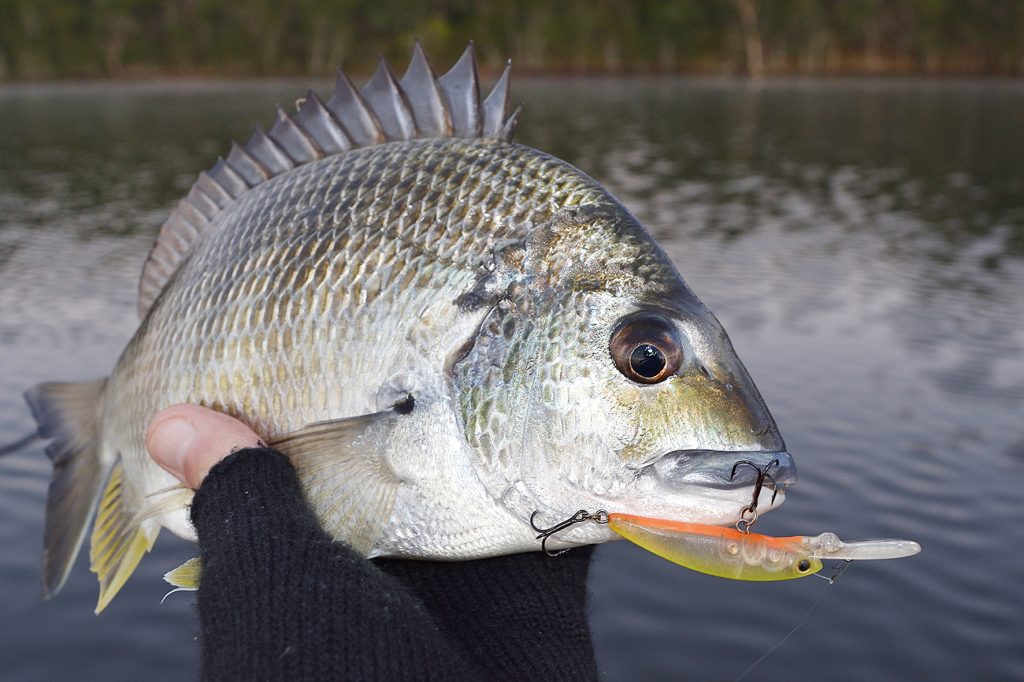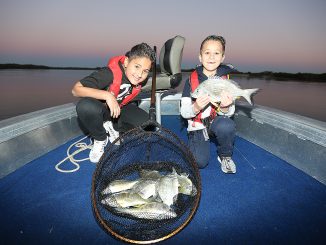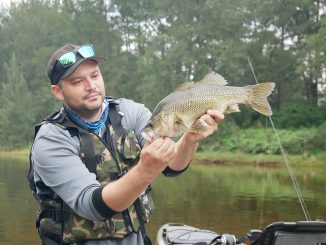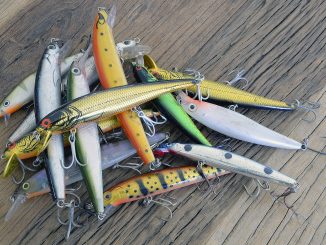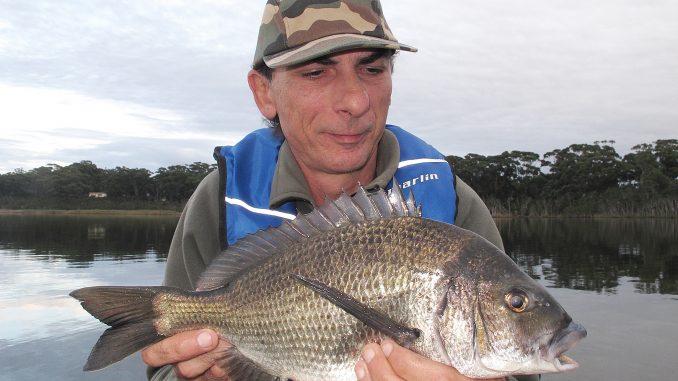
• by Jamie Robley (first published November 2021)
Four decades ago, when I first started offering lures to my local bream population, we called it ‘bream spinning’, because back then almost any form of cast and retrieve lure fishing was commonly referred to as ‘spinning’. If you didn’t spin, you trolled! Fast forward to the current day and it doesn’t matter exactly what it’s called, casting lures for bream continues to grow in popularity.
Perhaps the biggest individual turning point in the game that I can think of would be the advent of bream tournament fishing. In fact, the guy behind this very magazine, the highly respected Steve Morgan, was one of the main players in getting the ball rolling with bream tournaments in this country. I still remember the old days at Brunswick Heads, on the NSW North Coast, where I watched Steve and his brother Tim Morgan cast lures for bream in the river there. I can say in all honesty, these guys were ahead of their time and it’s no wonder that their names ended up becoming so known in the angling world in the years to come.
HARDBODY CRANKS
Way back in the early days the main type of lures aimed towards bream were actually the smaller bass lures. It was widely known for many years that our freshwater bass would keenly smash a small diving hardbody or crankbait. The concept of catching bream on lures didn’t start to take hold until the 70s, and more so during the 80s. So back then, we didn’t have the enormous variety of lures that we do today. So at this stage, some of the smaller bass lures were gradually building a reputation as bream lures. As this relatively new style of Aussie angling took off, more people also started experimenting with little trout lures, such as Nilsmasters and Rapalas.
By the late 80s, a number of smaller, more suitable lures started arriving, mainly from overseas, although a few switched on local manufacturers were also beginning to make new, smaller models, which would interest bream, bass or trout. Perhaps the biggest brand name of this period, which made an impact was Rebel, with their miniscule models, the Crawfish and Crickhopper, as well as a small shallow swimming frog and a few other slim profile types. The Crawfish though, was the one that went onto bigger heights and became our most popular bream lure for a few years. In fact, still now a lot of keen anglers have a few Rebel Crawfish lures in their boxes.
We didn’t have much else to compare with at that early stage, so these small, traditional crankbait lures remained the main type of bream lure for many years. Obviously, different brand names and models kept coming onto the market and our choices continually expanded.
The question is, does this type of lure still remain a valid choice and have its place in the modern angler’s tackle kit? The answer is a very firm YES. These lures are an ideal choice for a variety of different scenarios. Perhaps the main application that comes to my mind is casting to fallen timber, rocks and other bankside structure in our creeks and rivers. In these snaggy places, a floating crankbait can be cast and retrieved over or through potentially snaggy structure, with a pretty good chance of not getting snagged. However, because they float and generally don’t dive more than a metre or two, even if they do get caught up in timber or rocks, it’s normally pretty easy to get them back off again.
Overall, they’re possibly the most versatile type of lure to cast for bream, as they can also be fished in a number of different ways. When in the mood, bream will smash them as soon as they land, even without being retrieved. They can also be retrieved in different ways, from very slowly, to much faster and more aggressively.
It’s largely up to the angler, how they want to ‘drive’ a lure, but my main tip here is to go slower and more cautiously during the cooler months and a bit faster, with more stops, pauses and faster rips through the warmer months. Black bream are also often more inclined to hit a lure worked slowly, as opposed to yellowfin or pikey bream, which tend to prefer some faster, more erratic movement. Once again though, this is a variable thing and I’d always be considering the time of year and prevailing weather when deciding what sort of retrieve to employ.
Another way we can use these lures, which shouldn’t be ignored, is to slowly troll them behind a boat or kayak. This isn’t the way to go about things during a tournament, but it works well and is an excellent technique to try when bream aren’t coming your way. Just keep it slow and about 15m or so behind the vessel. You’ll feel the lure vibrating through the rod and if it stops vibrating than wind it in because chances are the hooks have picked up a bit of weed or debris. If you hook a couple of fish in the one spot then stop and try casting there. Trolling is a great way to find patches of bream in lakes or rivers.
SOFTIES
Soft plastics were the next big thing and they sure made a big impact on all forms of fishing around the country from the late 90s and early 2000s. This time, Steve Starling was one of the main players in helping Aussie anglers learn about fishing with softies. Although these newer rubbery lures appealed to a wide variety of species, keen bream enthusiasts embraced them more than anyone else, myself included.
Once the basics of soft plastics fishing are understood and they’re put to work in the right way, their effectiveness becomes very obvious. I’d say that my own bream catch rate and numbers of fish caught possibly doubled, after years of hardbody crankbait use.
As good as they are, softies aren’t the Holy Grail of bream lures and they really shine in some departments, but aren’t so effective in others. When casting amongst a patch of fish, few lures could equal a well presented soft plastic. However, the key is finding the fish in the first place and this is where softies lag behind. Due to the slower way we use them, it normally takes longer between the time you fire off a cast and have the lure wound back to the rod tip, ready to cast out again. So during a given timespan, other lures like hardbodies or vibes could be cast and retrieved a lot more.
Plastics may also be harder to use in windy conditions or when fishing with a strong current flow. These situations can put quite a bow in the line and one of the key factors that brings success when using these lures is to maintain a reasonably straight line between the water and rod tip. This is so we can visually detect bites or other movement in the line. The more prominent a bow in the line, the less we can do this.
So overall, I’d be keeping soft plastics (especially scented or flavoured types) as front line weapon of choice, providing you’re confident of finding where the fish are in the first place and the prevailing conditions are suitable for this slower style of bream luring.
VIBES
Another turning point in bream lure evolution was around 2007 when metal vibes hit the Aussie market. Although this style of lure had already been available here, in different forms for a few decades, these newer metal vibes were of more recent Japanese origins and their small sizes immediately had bream anglers interested. I quickly embraced them and started catching bream from the word go. In fact, small metal vibes have remained my main lure of choice for bream around the Central Coast lakes, throughout the year.
Often abbreviated to ‘vibs’, they are extremely effective and surprisingly versatile. I regularly use them in the deeper parts of Lake Macquarie, as well as water as shallow as 30cm. They can even be burned across the top of shallow weed beds with surprising success through the warmer months.
To my way of thinking, small metal vibes fill a similar spot to soft plastics, but due to their faster sink rates and a few other factors, they can be used in a quicker way than softies.
When bream are in the mood, they’ll often pick a metal vibe off the bottom, as it lay there motionless. More often though, a slow, steady retrieve, with stops or pauses along the way is the best way to go.
Over the years, I’ve tried a wide variety of vibes, including the various hybrids and soft vibes, but my personal favourites are the Ecogear ZX30 and 35 models. Replacement stinger style hooks are readily available as a set, but I prefer to make up my own, with some thick, cheap braid, size 10 Gamakatsu Octopus hooks and some super glue. I don’t even bother with those rubber legs, as I strongly believe it makes no difference to bream if they are on the hooks or not.
Most lure types have their weakness and the biggest problem with sinking vibes, especially the metal ones fitted with two sets of trebles, is they are very snag prone around rocks or timber structure. So they’re definitely not the best thing to be casting around a timber lined creek for example.
ON THE TOP
Many anglers love nothing more than casting surface lures, for bream or any other species for that matter. Small surface lures are another mainstay of my bream box and although they’re mainly used during the height of summer, I’ve caught bream on the top in all months of the year, including the depths of July. Still though, they’re generally at their best when it’s nice and warm and prawns or shrimp are out and about.
Perhaps the two main areas where they’re not so good is when fishing deep water, as in major tidal rivers, harbours or deeper sections of bays or lakes and also when bream are in a hesitant mood. If I’m starting to find bream reacting too slowly or constantly looking, without actually biting, I don’t muck around too much. It’s off with the surface and on with something else like a vibe or whatever. I’m always out to catch fish more so than just take in the scenery and it’s all too easy to spend an hour or more playing around with bream that are reluctant to hit a surface lure.
IN SUMMARY
There are a few other types of lure or sub categories that I could have included here, as well as fly fishing. However, the main types are covered. So, is there one type I would recommend above the others or is there any particular stand out model to suggest? Anglers always want to know, but unfortunately there isn’t always a realistic and true answer.
What I can say with confidence though, is that it’s very much up to the angler to learn about the pros and cons of different lures and realise that there’s the right time and place for all of them. It’s also very important to understand that the angler’s input is more important than what’s tied on the end of a line, be it lure, fly or bait. By far the best way of learning and understanding about lure fishing for bream is to get out there and spend as much time as possible, casting, looking, taking note and hopefully catching!


